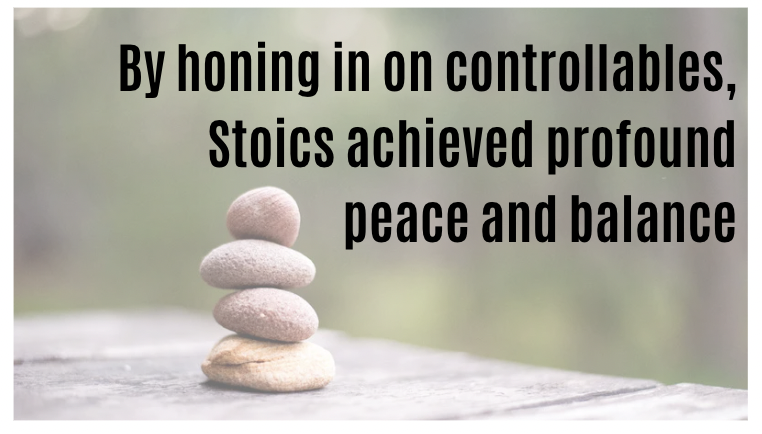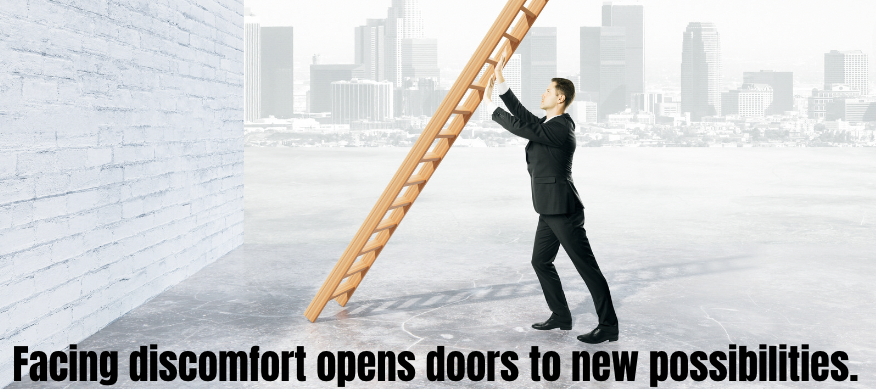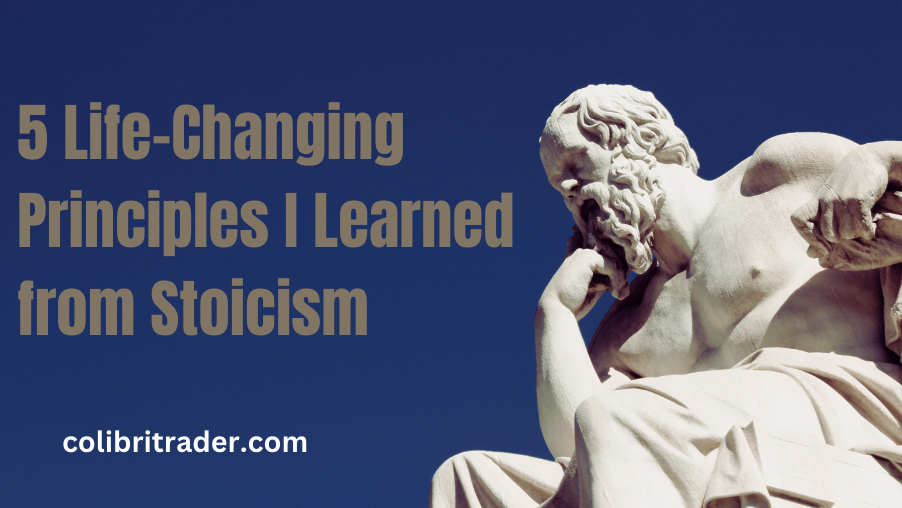5 Life-Changing Principles I Learned from Stoicism: Conquer Stress, Find Peace, and Live Your Best Life
Are you feeling swamped by life’s unpredictability and stress? You’re in good company. As someone juggling entrepreneurship and parenthood, I was once plagued by anxiety. Then, Stoicism, an age-old philosophy from Greece and Rome, came to my rescue, offering practical and transformative wisdom.
I embraced several Stoic tenets, which dramatically reshaped my mindset. From a state of constant worry, I transitioned to experiencing profound calmness.
Curious? Let’s delve into the five Stoic teachings that revolutionized my life, helping me to master stress, develop resilience, and thrive.
Here is a quick video about Stoicism:
Contents in this article
The Roots of Stoic Philosophy
Before we unpack these lessons, let’s briefly revisit Stoicism’s inception.
Originating in 300 BC Athens, Stoicism quickly spread, captivating minds in Greece and Rome. Focused on practical life guidance grounded in ethics, logic, and nature, Stoicism diverged from other philosophies by addressing real-world concerns.
Key proponents of Stoicism included:
- Zeno of Citium: The founder, inspired by Socrates, who debated philosophy in Athens’ Agora.
- Seneca: A wealthy Roman statesman and playwright who conveyed Stoic ethics to diverse audiences and advised Emperor Nero.
- Epictetus: Once a slave, he later established a school of philosophy, emphasizing resilience. His teachings are preserved in the Enchiridion.
- Marcus Aurelius: The final notable Stoic, an emperor whose journal, Meditations, is a cornerstone of Stoic literature.
Now, let’s explore the pivotal Stoic principles that fostered my personal transformation.
Lesson 1: Control What’s Within Your Reach
Stoics understood that stress often stems from trying to control the uncontrollable. We obsess over promotions, our children’s behavior, the economy – all beyond our direct influence.
Their advice? Channel your efforts into what you can control – your thoughts, desires, actions, and values.
Business anxieties plagued me until Stoicism shifted my focus to quality service and adaptive strategies. Despite challenges, my approach became more resilient.
Stoics categorized life into:
Controllables
A) Opinions and evaluations
B) Wishes and aversions
C) Goals, values, attitudes
D) Actions and habits
Uncontrollables
A) Health, wealth, reputation
B) Others’ actions
C) Success outcomes
By honing in on controllables, Stoics achieved profound peace and balance. Embrace this mindset, and external turbulence won’t sway you.

Applying This in Life
Ask yourself when stressed:
- What’s under my control here?
- What actions can I take in those areas?
For uncontrollable factors:
- How can I detach from these outcomes?
- What if I viewed these as neutral events?
Extra Tips:
- Channel worries into action
- React thoughtfully, not emotionally
- Focus on execution over external control
“Our reaction to events, not the events themselves, shapes our destiny.” – Epictetus
Lesson 2: Embrace Discomfort for Growth
Modern life often fosters stagnation. Stoics, however, viewed discomfort and adversity as catalysts for self-development.
Enduring short-term hardships expands our capabilities and transforms us. Stoic Musonius Rufus practiced physical hardships like an athlete to fortify his willpower.
I once shied away from challenges like public speaking. Embracing these fears ultimately enhanced my confidence and leadership.
Venturing beyond comfort zones fosters immense growth. Each challenge builds mental resilience and adaptability.
Practical Applications
- View fears as growth opportunities
- Pursue goals that stretch your limits
A) Cold showers
B) Physical training
C) Fasting
Use the mantra “Discomfort breeds strength” for new challenges
Seneca’s wisdom rings true here:
“Challenges are difficult not because we lack the courage; it’s our hesitation that makes them so.”
Facing discomfort opens doors to new possibilities. Harden your resolve, and watch the impossible become attainable.

Lesson 3: Transform Negatives into Positives
Misery often stems from labeling experiences as purely “good” or “bad”. Stoics mastered the art of reframing challenges through reason and discernment.
Reinterpreting difficulties fosters resilience and uncovers meaning in hardship. I transformed my reaction to travel hiccups into opportunities for enrichment and connection.
Seneca, despite losing his wealth and being exiled, chose to focus on philosophical writing and nurturing friendships, turning adversity into creative growth.
Applying This Wisdom
When facing hardships, consider:
A) What virtues can this situation foster?
B) What learning and growth can arise here?
C) Can this difficulty enhance mindfulness or presence?
Additional Strategies:
A) Seek the silver lining
B) Avoid extreme labels in your language
C) Focus on attainable goals instead of losses
Marcus Aurelius insightfully noted:
“External pain is not the issue; it’s our perception of it that matters, and we can change that anytime.”
Reframing challenges allows us to find calm in the storm. Question initial reactions, adjust your perspective, and discover tranquility amidst chaos.
Lesson 4: Virtue and Nature as Priorities
Stoics observed people forsaking virtue for fleeting external rewards. They believed true fulfillment comes from internal focus and principled living.
Centering your life around virtue and self-mastery ensures unwavering peace, irrespective of external turmoil. I shifted from pursuing mere professional gains to prioritizing integrity and value contribution. Interestingly, professional success followed naturally.
True contentment, for Stoics, lies in overcoming fears, altruism, or engaging in inherently joyful creative acts. Align with your deepest values for enduring fulfillment.
Life Applications
1) Define your core values and purpose.
2) Align daily activities with these values.
3) In moments of stress, reflect: “What would my best self do?” Then act on it.
Marcus Aurelius advised:
“Focus on the task at hand with dignity and justice, as a human being and a Roman.”
Rooting yourself in your values offers stability amidst life’s unpredictability.
Lesson 5: The Power of Mindfulness
Stoicism emphasizes mindfulness: being fully present rather than lost in past regrets or future anxieties.
Living in the moment enriches life and anchors you in reality. Disconnecting from digital distractions and engaging in reflective activities like nature walks has deepened my gratitude and presence.
The present offers a sanctuary from external chaos. Regularly returning to the now creates a haven of calm and clarity.
Mindfulness Techniques
- Designate tech-free times.
- Embrace contemplative practices like journaling or hiking.
- Practice patience and presence during waiting periods.
- When anxious, focus on physical sensations or your immediate surroundings.
Epictetus on enduring adversity:
“Physical constraints don’t hinder our ability to choose justly.”

Adversity can’t obstruct our capacity for wise and just living. We always have access to the present’s riches.
Embracing Stoic Wisdom for Life Transformation
Stoic philosophy has inspired countless historical figures, from George Washington to Nelson Mandela. Integrating these Stoic principles has brought me serenity and joy.
These insights might ignite your interest in Stoicism’s potential for peace and fulfillment. Explore this philosophy with an open mind, and you too can master your inner world and achieve your highest potential.
Now, step forward into Stoic tranquility.
What action will you take today towards this serene journey?





